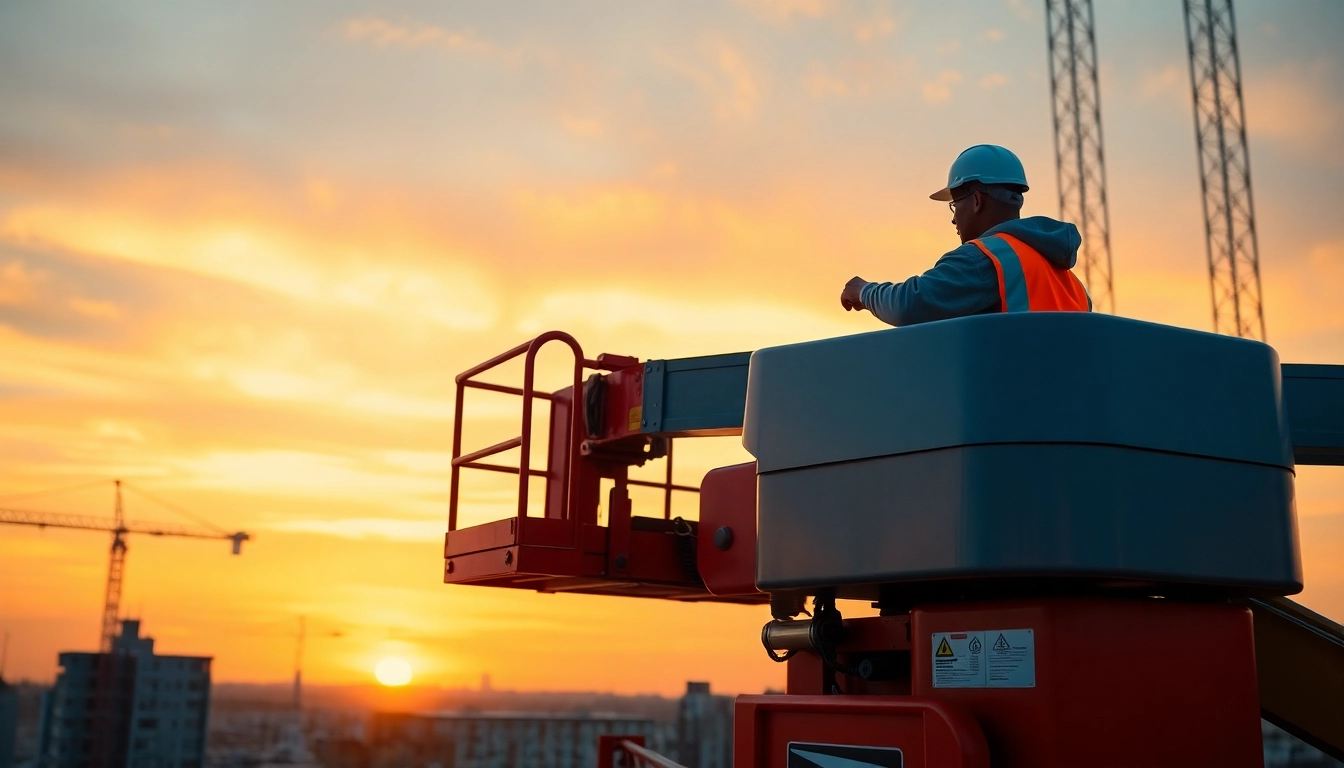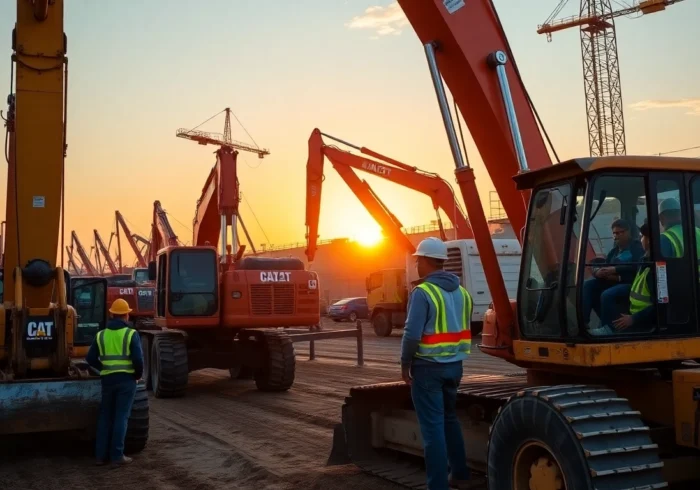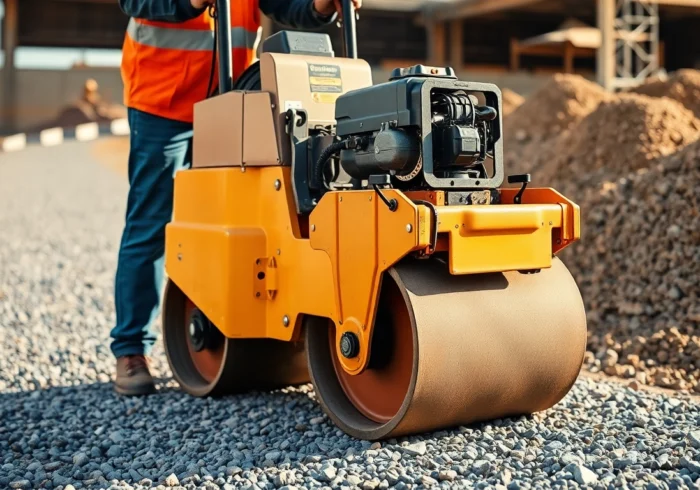Comprehensive Guide to Boom Lift Rental: Making Informed Choices for Your Construction and Maintenance Projects
When undertaking projects that require elevated access—be it in construction, maintenance, event setup, or industrial applications—using the right type of aerial platform is vital for safety, efficiency, and cost-effectiveness. Boom lifts, also known as cherry pickers or aerial work platforms, are versatile tools that enable workers to reach considerable heights with precision and safety. As the demand for these machines increases across various industries, so does the importance of understanding the nuances involved in choosing and renting a boom lift that precisely aligns with your project requirements.
Whether you’re a project manager, contractor, facilities manager, or DIY enthusiast, selecting the appropriate boom lift involves evaluating multiple factors, from the type of lift and power source to site conditions and operational safety. This comprehensive guide aims to demystify the process, providing detailed insights, practical tips, and industry best practices to ensure you make informed decisions—the kind that maximizes safety, productivity, and return on investment. For a seamless experience, explore our Boom lift rental options tailored to your project’s specific needs.
Understanding Boom Lift Types and Their Applications
Electric vs. Diesel Boom Lifts
One of the fundamental choices when renting a boom lift is the power source. Electric boom lifts and diesel-powered boom lifts each come with unique advantages and limitations, making them suitable for different applications.
Electric Boom Lifts
Electric boom lifts are renowned for their quiet operation, zero emissions, and suitability for indoor environments. They are the preferred choice for indoor construction, maintenance, or refurbishment projects within enclosed spaces like warehouses, shopping centers, or factories. Their cleaner operation reduces the risk of air quality issues and ensures compliance with strict safety standards.
Additionally, electric lifts tend to be easier to maneuver in tight spaces and are less maintenance-intensive compared to their diesel counterparts. Modern electric boom lifts often feature advanced battery technology, providing reliable run times with quick recharge cycles. These lifts typically have a niche working height, generally between 8 to 16 meters, ideal for indoor work or short outdoor tasks with minimal ambient restrictions.
Diesel Boom Lifts
Diesel-powered boom lifts deliver higher power output and are preferably used for outdoor applications, especially over uneven terrain or rugged sites. Their robust engines enable heavy-duty performance, higher working heights (sometimes exceeding 30 meters), and longer operational hours on a single fuel fill. They are well-suited for construction sites, utility maintenance, and large-scale infrastructure projects.
However, diesel lifts produce emissions and noise, which may limit their use in confined or environmentally sensitive areas. Maintenance costs are also higher, given the complexity of engine components. Selecting between electric and diesel should be based on project scope, site conditions, and environmental considerations.
Articulating vs. Telescopic Boom Lifts
Another critical distinction is the type of boom lift—articulating or telescopic—and their respective applications.
Articulating Boom Lifts
Featured by multiple pivot points, articulating booms have flexible joints that enable them to extend over obstacles and access hard-to-reach areas with precision. Their design allows for close positioning to structures, making them ideal for tasks such as building maintenance, window cleaning, or complex construction work requiring access around corners or obstacles.
Most articulating lifts are suitable for moderate to high elevations (typically up to 43 meters) and excel in confined spaces where maneuverability and versatility are paramount.
Telescopic Boom Lifts
Telescopic booms are characterized by their straight, extendable arm, providing the maximum reach and height capabilities. Their design offers stability and strength, making them ideal for tasks like high-rise construction, tower maintenance, or large-scale industrial projects where a direct, horizontal outreach is essential.
While telescopic lifts are less flexible in navigating around obstacles, their ability to extend directly outward makes them efficient for tasks requiring maximum vertical or horizontal reach over open areas.
Selecting the Right Height and Capacity
Accurate assessment of your project’s height and load requirements is fundamental to selecting the most appropriate boom lift. Mismatch in capacity can lead to safety hazards, operational delays, and increased costs.
Working Height
Determine the maximum height your team needs to access. Always incorporate a safety margin—generally 1 to 2 meters above the highest point of work—to account for the operator’s position, safety gear, and equipment attachments.
Load Capacity
Evaluate the equipment and personnel payload. Typical boom lifts support capacities ranging from 200kg to over 600kg, depending on the model. Overloading can compromise safety and stability; thus, understanding your operational load is essential.
Reach and Outreach
Beyond vertical height, consider horizontal outreach—how far the lift needs to extend from its base. This is especially important for accessing distant or overhead areas without repositioning the machine frequently.
Key Factors to Consider When Renting a Boom Lift
Safety Standards and Certifications
Safety is non-negotiable. Ensure that any boom lift you rent complies with relevant safety standards such as the UK’s BS EN 280, which governs powered access equipment. Verify that the equipment is regularly inspected, well-maintained, and possesses relevant certification labels from authorized bodies.
Moreover, operators should possess valid training and certification in handling the specific type of boom lift. Reputable rental providers often include safety checks and provide guidance on proper operation protocols, reducing the risk of accidents and liability issues.
Site Conditions and Accessibility
Evaluating the physical environment is critical. Factors such as rough terrain, indoor vs. outdoor settings, confined spaces, and overhead obstructions influence the choice of lift. For uneven or soft ground, opt for models with four-wheel drive or tracked mobility. For indoor work, lightweight, electric, and non-marking tire options are preferable.
Assessing site accessibility involves checking door widths, ceiling heights, and proximity to power sources or obstructions. A thorough site survey helps avoid delivery failures and operational inefficiencies.
Rental Duration and Cost Efficiency
Rental periods vary from daily to long-term contracts spanning weeks or months. Longer-term rentals often offer discounts and better overall value but require upfront planning.
Consider factors like equipment utilization rates and project timelines to optimize costs. Additionally, some providers include delivery, setup, and maintenance in their packages, which can streamline your operations and reduce unforeseen expenses.
Step-by-Step Guide to Booking Your Boom Lift Rental
Assessing Project Requirements
Begin by clearly defining your project scope: necessary working height, load capacity, site conditions, and duration. Document specific tasks, timelines, and safety considerations.
Gather detailed measurements of the site, including terrain, accessibility, and structural features, to aid in selecting the suitable equipment type and specifications.
Finding a Reliable Rental Provider
Research reputable suppliers with a track record of safety, compliance, and excellent customer service. Use online reviews, industry references, and licensing credentials as evaluation criteria.
Compare rental packages, including included services such as delivery, installation, operator training, and maintenance support. Confirm availability based on your project schedule.
Visit the provider’s facility if possible, to inspect equipment condition firsthand, or request detailed images and safety documentation.
Preparing Your Site for Equipment Delivery
Communicate clear access instructions for delivery vehicles, ensuring unobstructed routes for large machinery. Clear the area of debris, overhead hazards, or obstacles that could impede setup.
Designate a safe and level staging area for the boom lift. Confirm that power sources (if needed for charging or operation) and supporting infrastructure are in place.
Ensure your team is briefed on safety protocols, emergency procedures, and operational guidelines prior to equipment arrival.
Best Practices for Safe Operation and Maintenance
Operator Training and Certification
Only qualified personnel should operate boom lifts. Industry standards require operators to undergo specialized training culminating in certification, such as PASMA or IPAF qualification in the UK.
Training covers safety procedures, equipment controls, risk assessment, emergency protocols, and maintenance routines.
Encourage a culture of continuous learning and periodic refresher courses to uphold safety standards.
Regular Safety Checks During Usage
Daily pre-operation inspections are critical. Check for damages, leaks, tire condition, control functionality, and safety devices such as emergency stops and alarms.
Monitor weather conditions, especially wind speeds, which can critically impact stability at height. Cease operations during adverse weather.
Maintain a log of inspections, issues identified, and remedial actions taken to ensure ongoing compliance and safety documentation.
Proper Storage and Maintenance Post-Rental
Upon project completion, store boom lifts in designated, secure areas protected from weather to prevent deterioration.
Follow manufacturer-recommended maintenance routines, including lubrication, battery care, and part inspections, to prolong lifespan and readiness for future use.
Arrange for professional servicing periodically, especially if the machine experiences heavy or prolonged use.
Measuring ROI and Cost-Effective Rental Strategies
Comparing Rental Prices and Packages
Rental rates can vary based on equipment features, rental duration, and service inclusions. Obtain detailed quotes from multiple providers to benchmark costs.
Be wary of hidden fees such as delivery, set-up, operator charges, or late return penalties. Clarify what is included upfront to avoid surprises.
Look for value-added services like free delivery, on-site training, or maintenance packages that enhance overall cost-effectiveness.
Maximizing Equipment Utilization
Ensure your team is trained to operate the equipment efficiently, minimizing downtime and maximizing productivity. Use the boom lift for multiple tasks when possible.
Plan operations to reduce wait times and optimize scheduling, especially during overlapping projects or large-scale operations.
Regularly assess equipment performance and maintenance logs to detect issues early, reducing costly repairs and downtime.
Understanding Rental Agreement Terms
Carefully review terms regarding responsibility for damages, insurance coverage, liability clauses, and dispute resolution processes.
Negotiate flexible terms that align with your project timeline and operational needs. Clarify policies on prolonging rental periods or early returns.
Maintain documentation of all agreements, inspections, and communications for accountability and future reference.



